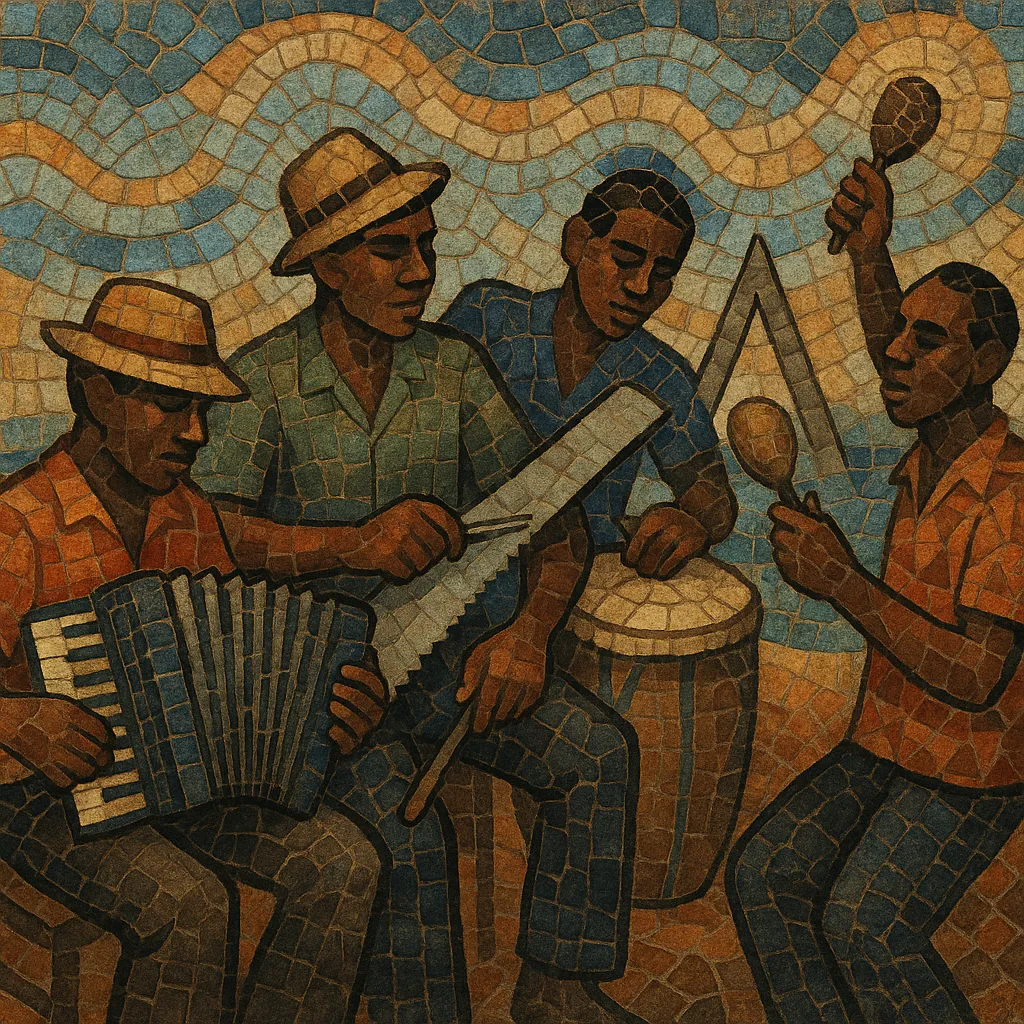Ripsaw is a traditional dance music of the Turks and Caicos Islands that centers on the distinctive scraping sound of a hand saw played percussively. A metal file, knife, or screwdriver is rhythmically dragged across the serrated edge of the saw to create a driving, chattering groove that locks in with goatskin drum, triangle, and maracas.
Melodically, ripsaw bands often feature accordion or concertina carrying lively tunes rooted in European social-dance forms (polka, waltz, mazurka), while the rhythmic feel and vocal approach reflect West African diasporic aesthetics—polyrhythms, call-and-response, and community participation. The result is a celebratory, kinetic sound closely related to Bahamian rake-and-scrape, yet bearing its own island identity and repertoire.
Ripsaw emerged in the early 20th century in the Turks and Caicos Islands, where island social dances and community celebrations drew on both African-descended rhythmic practices and European dance forms brought via colonial contact and migration. The signature technique—scraping a handsaw with a metal object—provided a loud, portable rhythm instrument that could cut through outdoor gatherings and accompany dancing without amplification.
The tradition is closely related to Bahamian rake-and-scrape. Historical labor migration and maritime links between the Turks and Caicos and The Bahamas facilitated musical exchange: accordion-led melodies (from polkas, waltzes, and mazurkas) were married to African diasporic grooves, producing locally distinct but intertwined scenes. In the Turks and Caicos, the term “ripsaw” took hold, referencing the instrument’s ripping sonic texture.
By the mid-1900s, ripsaw ensembles—accordion, saw, goatskin drum, triangle, and shakers—became a staple of island dances, weddings, holidays, and festival stages. Repertoires included local compositions alongside island variants of European-derived dance tunes, all energized by the percussive drive of the saw.
Today, ripsaw remains a cultural emblem of the Turks and Caicos Islands. It is performed at national celebrations, cultural festivals, and community gatherings, and continues to evolve through fusions with calypso and modern Caribbean popular styles. Educational and cultural programs promote ripsaw as a living heritage, preserving its characteristic instrumentation and dance function.


